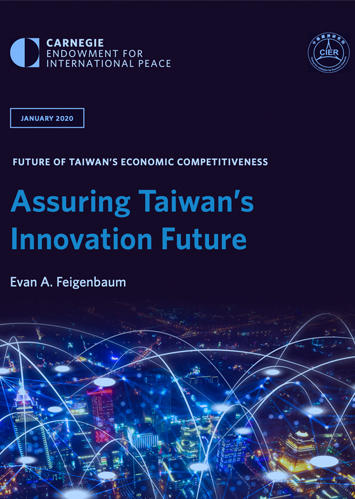Assuring Taiwan's innovation future
Future of Taiwan's Economic Competitiveness
05.04.2022
(Open Access)
Taiwan’s innovation advantage is in danger of eroding. It needs a revitalized and broadened strategy, more diverse investments in human capital and next-generation industries, and forward-looking partnerships with the United States.
Innovation has been a source of comparative advantage for Taiwan historically. It has also been an important basis for U.S. firms, investors, and government to support Taiwan’s development while expanding mutually beneficial linkages. Yet, both Taiwan’s innovation advantage and the prospect of jointly developed, technologically disruptive collaborations face challenges.
For one, Taiwan’s technology ecosystem has been hollowed out in recent decades as personal computing (PC), component systems, and mobile device manufacturing moved across the Taiwan Strait to mainland China. Meanwhile, Taiwan’s innovation ecosystem has struggled to foster subsequent generations of startups to replace these losses in electronics manufacturing. Despite a freewheeling startup culture, internationalization has been a persistent challenge for Taiwan-based firms. Technological change and political challenges from Beijing present additional risks to Taiwan’s innovation future.
In this context, it is essential that Taiwan get back to basics if it is to assure its innovation advantage. One piece of this will involve taking a hard look at the domestic policy environment in Taiwan to ensure a steady pipeline of next-generation engineering talent. Yet Taiwan also needs to address several structural and policy factors that, over the last decade, have eroded its enviable innovation advantage.
Evan A. Feigenbaum is vice president for studies at the Carnegie Endowment for International Peace, where he oversees research in Washington, Beijing, and New Delhi on a dynamic region encompassing both East Asia and South Asia.
This paper examines five pressing challenges to Taiwan’s innovation future and proposes an array of specific solutions to promote Taiwan-based innovation, better leverage partnerships with U.S. and other international players, and bolster Taiwan’s standing in the global marketplace.
A particular focus is the need to foster a next generation talent pool with expertise in computer and data sciences, machine learning, and other fields that could contribute to the integration of software with Taiwan’s long-standing comparative advantages in hardware.
Taiwan’s innovation ecosystem has faced particular pressures on its ability to reorient from semiconductor and chipset design and fabrication toward new, future-facing industries. Many of the new systems in these industries do require advanced hardware. But they also require parallel adaptations in software, and the firms and national innovation systems that lead these industries tend to derive their competitive advantages from hardware-software integration.
To this end, forward-looking partnerships between Taiwan and U.S. players could naturally complement a revitalized and broadened innovation strategy for Taiwan.
